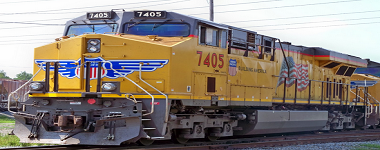Week 45 of 2017 shows same week total rail traffic (from same week one year ago) expanded according to the Association of American Railroads (AAR) traffic data. The economically intuitive sectors remain in expansion but growth rate continues to slow.

Analyst Opinion of the Rail Data
We review this data set to understand the economy. If coal and grain are removed from the analysis, this week it improved 0.6 % (meaning that the predicitive economic elements improved year-over-year). This week the one year rolling averages continue in expansion for the 24th week after contraction beginning in late 2015 – but generally decelerated this week.
Intermodal transport did grew strongly year-over-year this week – which is the economically positive element or rail transport.
The following graph compares the four week moving averages for the rail economically intuitive sectors (red line) vs. total movements (blue line): Rail’s intuitive sectors have been bouncing around the zero growth line for most of 2017.
This analysis is looking for clues in the rail data to show the direction of economic activity – and is not necessarily looking for clues of profitability of the railroads. The weekly data is fairly noisy, and the best way to view it is to look at the rolling averages (carloads [including coal and grain] and intermodal combined).
A summary of the data from the AAR:
For this week, total U.S. weekly rail traffic was 547,480 carloads and intermodal units, up 1.2 percent compared with the same week last year.
Total carloads for the week ending November 11 were 263,265 carloads, down 3.3 percent compared with the same week in 2016, while U.S. weekly intermodal volume was 284,215 containers and trailers, up 5.6 percent compared to 2016.
Five of the 10 carload commodity groups posted an increase compared with the same week in 2016. They included nonmetallic minerals, up 1,450 carloads, to 38,318; chemicals, up 1,058 carloads, to 30,662; and metallic ores and metals, up 892 carloads, to 22,673. Commodity groups that posted decreases compared with the same week in 2016 included coal, down 6,740 carloads, to 85,378; grain, down 3,973 carloads, to 22,845; and petroleum and petroleum products, down 865 carloads, to 10,284.
For the first 45 weeks of 2017, U.S. railroads reported cumulative volume of 11,702,354 carloads, up 3.1 percent from the same point last year; and 12,133,011 intermodal units, up 3.7 percent from last year. Total combined U.S. traffic for the first 45 weeks of 2017 was 23,835,365 carloads and intermodal units, an increase of 3.4 percent compared to last year.












Leave A Comment